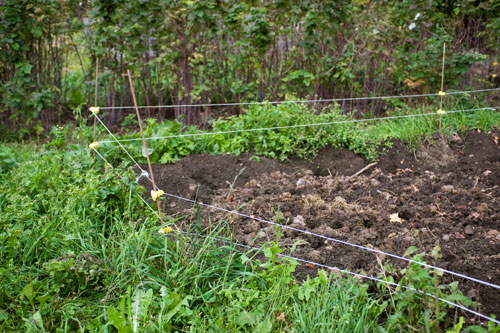Management Effects on Plant Growth
(Lesson 6. Managing for a Year-Long Forage Supply continued)
 Normally in spring, pasture growth keeps up or keeps ahead of grazing animals. Under continuous grazing or high stocking rates, once summer comes and pastures get grazed down, they never seem to quite recover. This is for a reason. One must remember that half of the pasture is beneath the soil (the roots). When a plant is grazed, the plant tops (leaves) are removed. What we sometimes don’t think about is that those leaves are feeding the whole plant (from the sun by photosynthesis). The plant compensates for top removal by sloughing off roots.
Normally in spring, pasture growth keeps up or keeps ahead of grazing animals. Under continuous grazing or high stocking rates, once summer comes and pastures get grazed down, they never seem to quite recover. This is for a reason. One must remember that half of the pasture is beneath the soil (the roots). When a plant is grazed, the plant tops (leaves) are removed. What we sometimes don’t think about is that those leaves are feeding the whole plant (from the sun by photosynthesis). The plant compensates for top removal by sloughing off roots.
Although it is a generalization, we need to think that what is going on above ground with our pasture plants is also going on below ground. When plant tops get shorter because we graze them, plant roots also get shorter. If plant tops are kept short, plant roots will also be short. A short root system can’t explore very much of the soil for moisture or nutrients. When soil starts to dry, it does not take very long before the dry line in the soil is deeper than the plant roots. Even if fertilizer is applied, once nutrients are out of the relatively small rooting zone, the plant cannot get any more. Even when it rains, these plants are not as vigorous and cannot regrow as quickly. By letting pastures rest between grazings, plants can grow tops, which will help them grow more roots. This will then help them to explore more of the soil for water and nutrients, allowing the plants to grow more quickly after grazing. These are some of the reasons why rotational grazing helps pastures be more productive.
